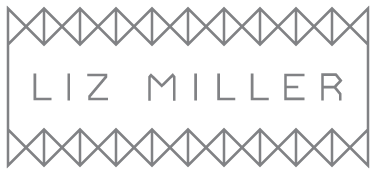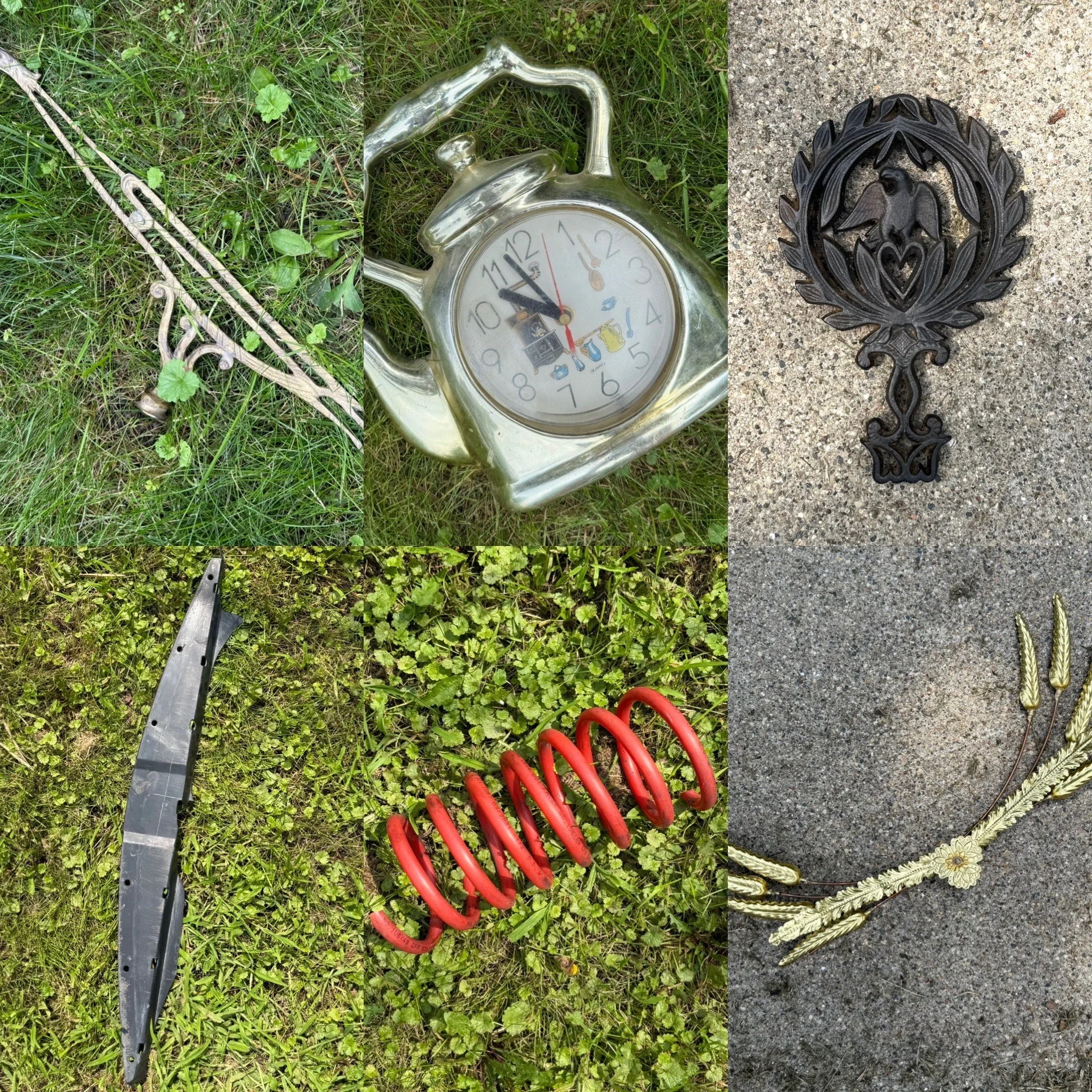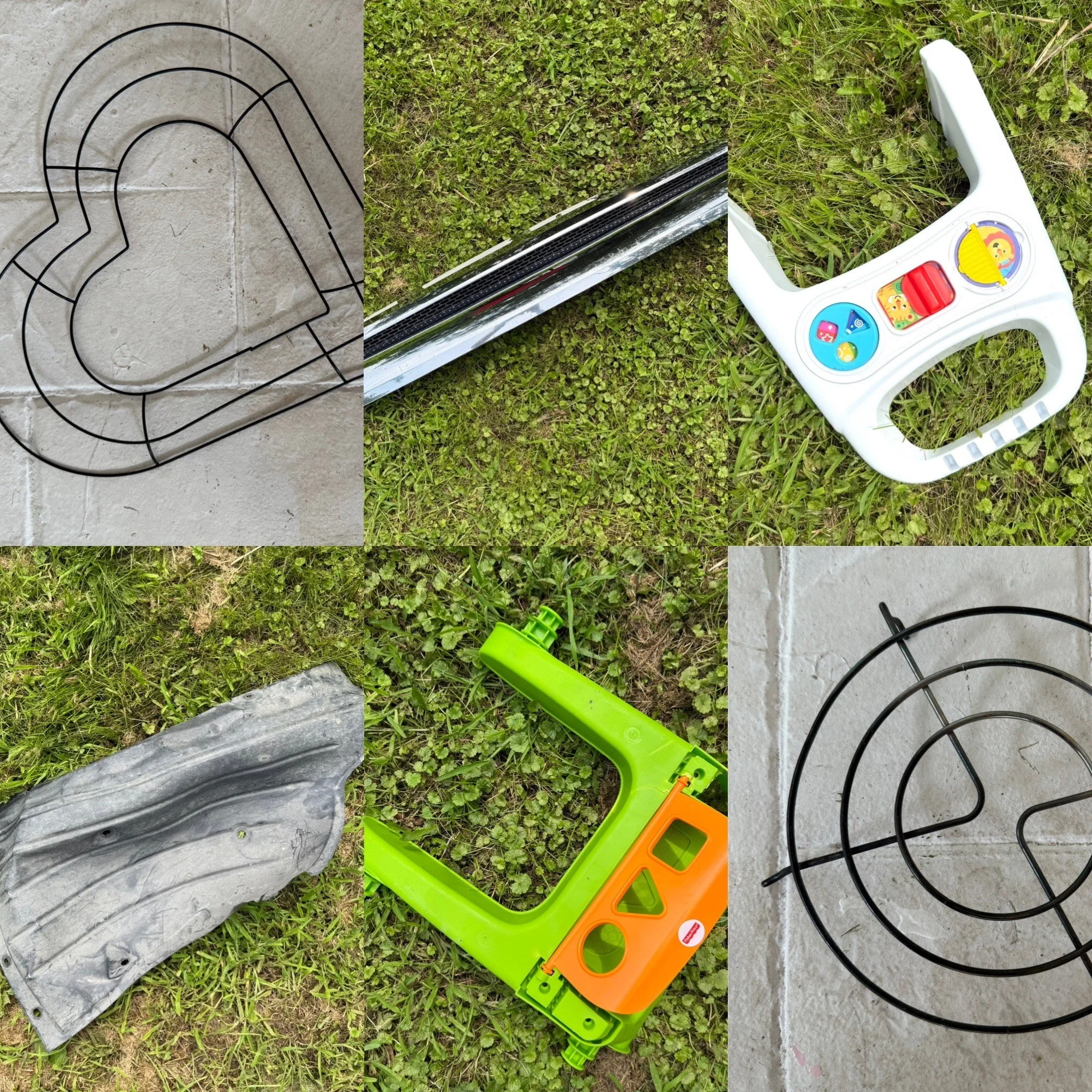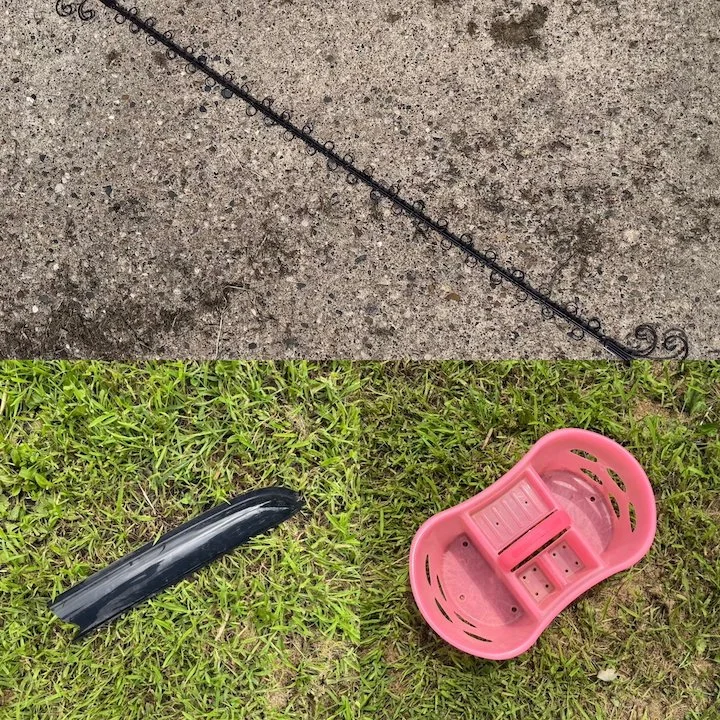Objects of Beauty: Atlas (16 West): Reflections After Three Weeks on The Road…and More About My Project
Although I just returned from an epic three-week road trip across many states, my project started locally. During the long, lonely, quiet days of the 2020-21 pandemic, I traversed our local, rural southern Minnesota gravel roads on foot and bicycle. I noticed many objects and fragments of objects scattered along the sides of these roads. Yes, there were plastic bottles and aluminum cans. But there were also many other objects, both banal and unexpected. To be fair, I’d been noticing objects scattered along the side of the road for a while—I just hadn’t actually been stopping to pick them up, or to contemplate these objects. My husband, David Hamlow, is a brilliant artist whose work integrates found objects in a way that feels effortless. As for myself, I’d always ignored the objects strewn throughout the countryside…or left those objects for David.
At some point, I started to collect things I’d been ignoring. Even at this early juncture, when it was only an impulse that led me to quickly grab a shard of plastic (or twenty) during my daily run, I knew that my interest in the objects filling my pockets was about more than recycling--and that I wasn’t necessarily trying to make a statement about the environment. I was more interested in the way the abandoned objects reveal personal and collective narratives, and the way that they become swallowed by and embedded in the landscape. Each object, on some level, had been a part of someone’s life—or even of multiple lives. This is equally true for vehicle debris, bed frames and children’s toys—all items I encounter again and again along our hometown roads.
Once I started collecting these overlooked, broken, and abandoned objects, I began to feel a deeper connection to the place I called home. These objects now belonged to me, and they became artifacts of the experience I had when encountering and rescuing them from the landscape. They were, in my mind, souvenirs of an adventure…or even justifications for my wandering. And I’ve always been a pretty good wanderer—I can walk…or cycle…or run…many miles without feeling bored or lonely. I love the way wandering lets my brain relax and unwind, and the way it reveals the mundane as something that is actually revelatory every time it is revisited with open eyes.
While I supposed that I would find many of the same objects anywhere I traveled, I became fascinated by the idea of experiences that would create new connections with objects that had been lost, abandoned, forgotten, and overlooked--in landscapes that were outside of what I considered home. I wondered if I could locate such objects in each of the 48 contiguous states in the United States, and create an “atlas” of these objects in the form of a wall-based installation. By juxtaposing the objects with intricately woven interludes of paracord, I would allow them to live on in a new light, to be admired and reconsidered as worthy. I would spend significant time with each object. The objects would be souvenirs of my experiences. And, although many souvenirs could be purchased online without ever going to a destination, that clearly defeats the point; a souvenir is an object through which an experience is remembered and relived. In this way, souvenirs are magical objects, or objects that remind us of the magic inherent in objects.
When I was about 6 years old, my mom took us on the first of several big family road trips. We piled into the car, and drove across the country. We collected souvenirs, but there were limits. I remember my mom asking, “Do you want this to be your souvenir for the day, Elizabeth?” I did! But I wanted ALL the souvenirs (I am a born maximalist). My mom reminded me that it would be more special if I selected one object as opposed to acquiring all the objects. I struggled with this. However, these words resonated with me recently as I set out across the western third of the United States, embarking on a three-week journey to collect objects from each of sixteen states.
Some people propose research projects where they know, at least within some approximation, what is going to happen. I am not one of those people. In fact, with wandering set forth as a necessary parameter of this project, it felt hard to solidify an itinerary in advance of the trip. The more I thought about what I was doing, the less feasible it seemed. How would I know where to go in each state? Would I just visit every Wal-Mart parking lot, collect shards of plastic, and move on to the next state? I hated that idea, and although the grant proposal I applied with was approved on a very loosely structured plan, I realized that I needed a bit more to ground my research in the ideals that gave it significance to me. I wasn’t just trying to clean up the ditches, or prove that there is trash everywhere, or make a statement on driving. I think about all of those things, but my work was to underscore how human stories and experience are embedded in everyday, seemingly ubiquitous objects. I had to find a way to embed my experience in these objects, while also honoring the experiences they had provided others. Otherwise, why not just head to the Mankato Wal-Mart parking lot, pick up a bunch of plastic, and call it a day?
I considered where people often travel to, where I also wanted to travel, and where I might find objects that I could connect to an experience. In other words: I wanted the objects I collected to reflect the experiences and lives of others, and I wanted the objects to reflect my own experiences. I wanted the objects to be souvenirs of my journey, and artifacts of a larger collective experience and nuanced individual stories.
National parks seemed the perfect places from which to position my travel. They represent some of the most beautiful areas in the country, they are places thousands of people travel to, and they display an inherent tension between nature and capitalism. This tension, of course, is witnessed in the parks themselves, but also in the towns that surround the parks. These towns are sometimes tourist meccas, but, in many cases, quite economically challenged. They rely on tourist dollars, but there is often an understandable tension between the locals and the tourist. More than ever, the national parks are under threat of extinction. More than ever, people flock to these parks. I became one of those people as I visited fourteen parks in three weeks.
As with any road trip, I encountered obstacles in the form of traffic, weather, and the seemingly never-ending forest fires that threatened and sometimes dictated our route. I felt very similar to my 6-year-old self when I struggled to find the perfect objects. Some objects came to me almost magically. Other times, I searched and searched, to the point of considering bending the rules of the project to purchase from a roadside shop--when was this appropriate? When I couldn’t find an object, I experienced the same sense of visceral panic that I felt four decades ago when I could not locate a souvenir I liked. I honed in on the roadside experience, and tried to consider only objects that were embedded in that experience in an authentic way. While this did end up including several objects found in fast food parking lots, and at vintage, antique, and thrift stores, I did my best to include these only where there was an absence of other options, and only where I could truly say that these places were part of the epic road trip.
In my recent creative research, Glen Adamson’s brilliant 2018 book Fewer, Better Things: The Hidden Wisdom of Objects has been paramount to the way I think about objects. Adamson adeptly positions the significance of objects in ways that are not only about money spent, perceived value, or fine craftsmanship, but also about experience and history. As I reflect on my travels, I feel similarly about the objects I collected. The monetary value of literally every object is minimal, or, in most cases, non-existent. Still, each object marked moments in time in someone’s life and marked a moment in time in mine. Together, the objects represent a broader collective history and are a reflection on the time in which we live. In this way, my rubber bouncy ball in the guise of an orange, gathered from Florida when I was a small child, has the same magic as the metal top of a garden rake I collected in New Mexico. I love holding both objects in my hands, feeling their texture and weight. The objects are nothing special, and they are everything special.
Now that all of the objects are out of the rental car and in my studio, I’m working to integrate them into a new body of work. I’ll be sharing more about my process and more about specific objects in future posts. I need to get busy, as my solo show this winter is just around the corner.
I am tremendously grateful to have received support for this project in the form of a Faculty Research Grant from Minnesota State University. I would also like to acknowledge the generous support of a Project Space Grant from Kolman & Reeb Gallery. I’m so fortunate to be able to pursue work that allows me to wander as opposed to always following a predictable path.
Thank you all for reading, and for following along on social media during my journey. I’m excited to bring you more updates from the studio soon!






